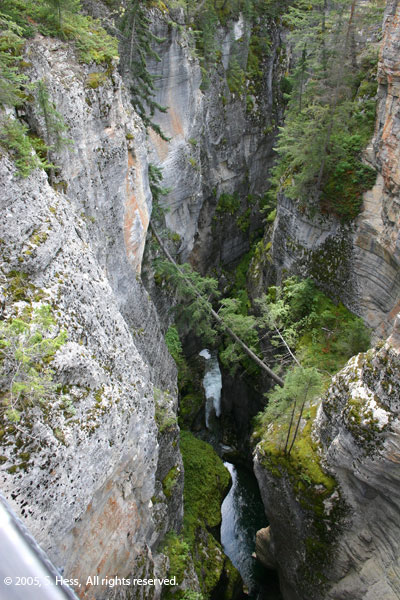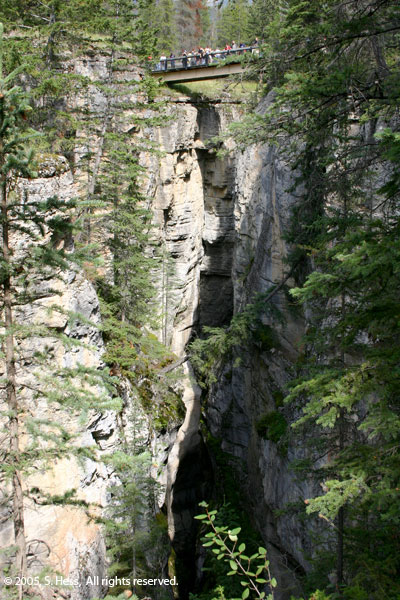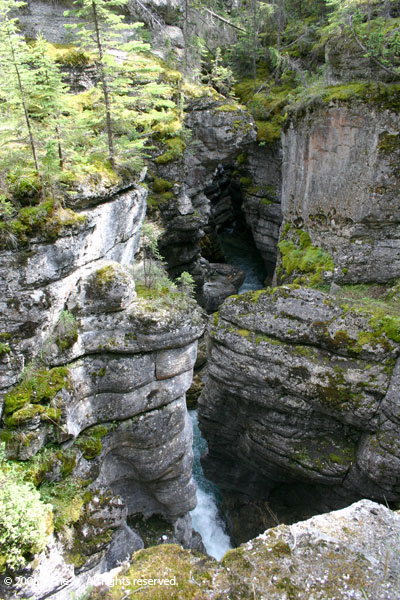We drove 60 miles (100 Km) south to the Columbia Icefield Center. The Columbia Icefield is the largest body of ice in the Rocky Mountains (130 square miles/325 square Km). From it flow several glaciers, including the Athabasca. The icefield is unique in that its meltwaters drain to three oceans. Some of the water, such as the Athabasca Glacier's, flows through the Athabasca River to the McKenzie River system to the Arctic Ocean. Other water flows through the Saskatchewan River system to Hudson's Bay and the Atlantic. The third drainage flows through the Columbia to the Pacific.
We followed that Athabasca River back to Jasper, stopping for lunch overlooking the drainage channels that form the Athabasca River. Our second encounter with animals came when we spotted Mountain Goats (two females and two kids). This is not a common occurrence, as these animals are usually found on higher elevations. The goats were licking the minerals on the ground adjacent to the Icefields Parkway. About 19 miles (30 Km) south of Jasper are the Athabasca Falls where the river drops over into a narrow canyon. Finally, we went to Maligne Canyon, 6 miles (11 Km) northeast of Jasper. Here the Maligne River runs through a deep slot canyon on its way to the Athabasca River.
Unfortunately the day did not end as it started, rain came in this evening and it looks like tomorrow will be wet. This turn in the weather was forecast and is the reason we tried to pack so much into our first day in the area.
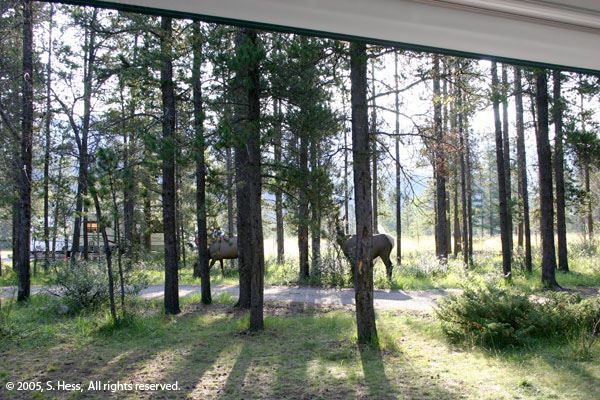
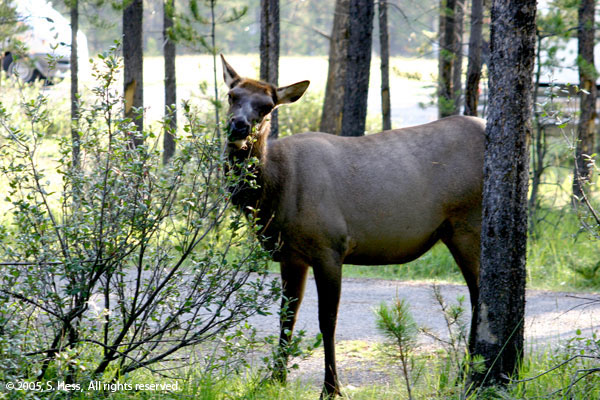
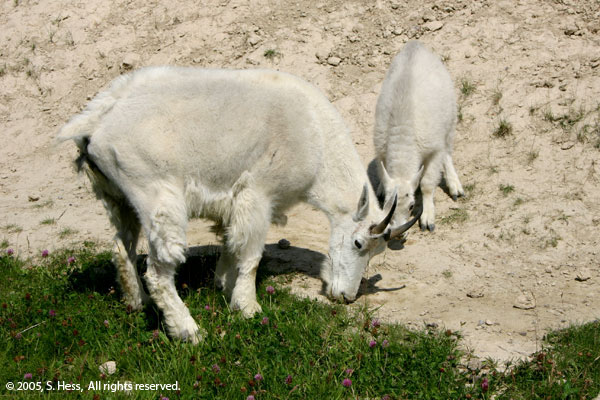
Columbia Icefield/Athabasca Glacier
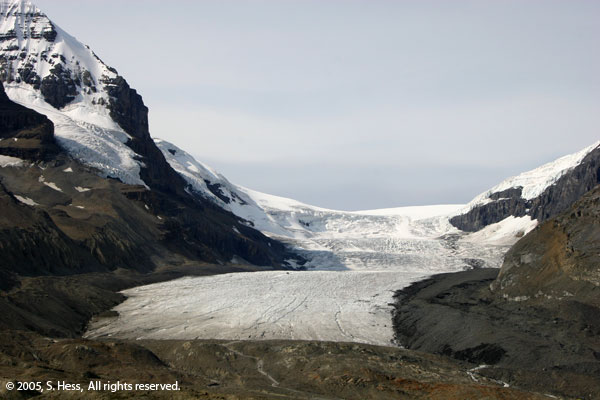
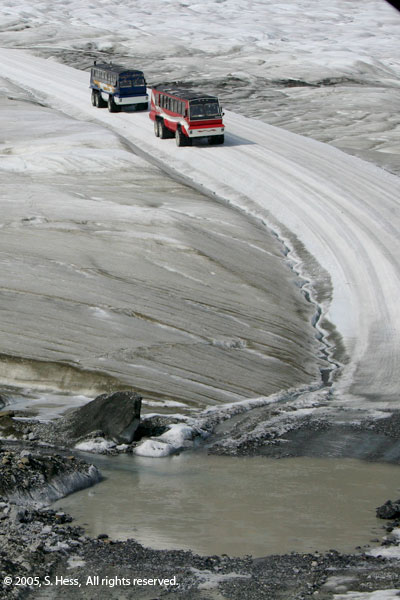
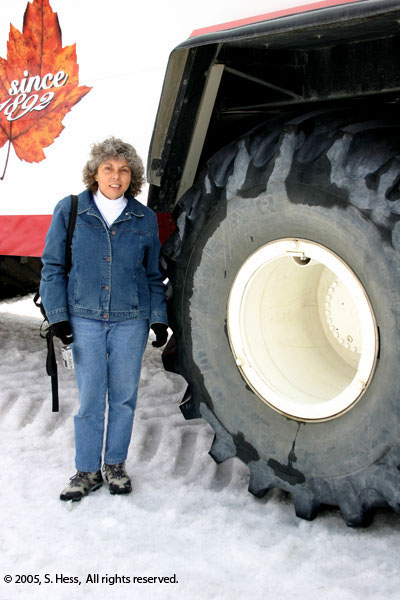
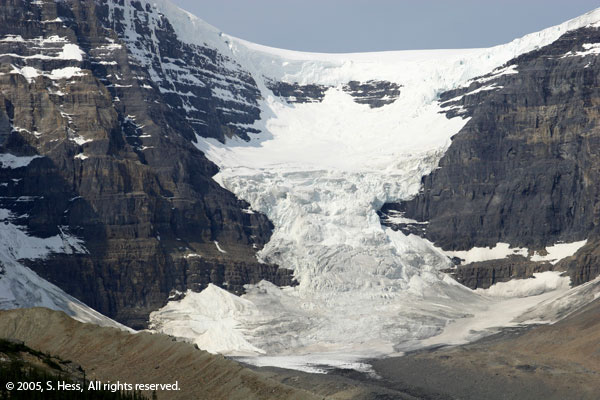
Athabasca Falls
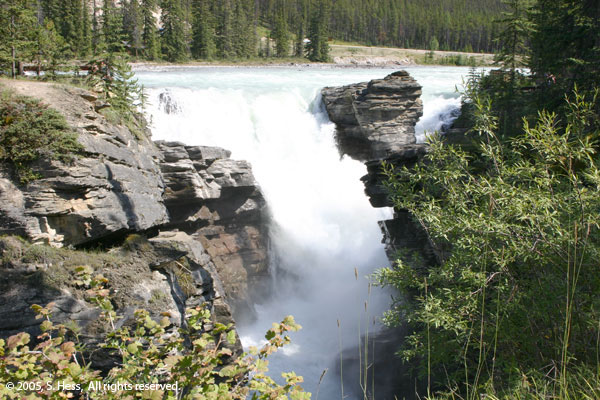
Maligne Canyon
